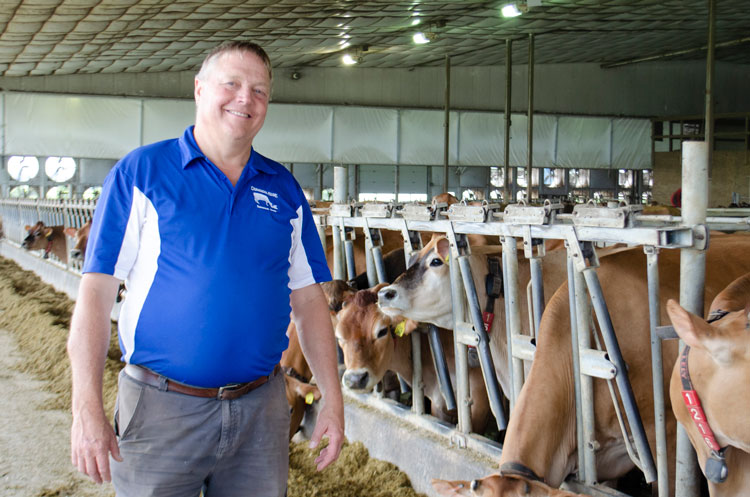
Making ends meet is a difficult task in today’s dairy market, but a focus on balancing outputs between high production and good components can go a long way in bolstering bottom lines.
“When you look at the milk check, consistently we are able to get paid $5 to $10 per hundredweight over the base because of fat, protein, and milk quality bonuses,” shared Cinnamon Ridge Dairy’s John Maxwell of the importance components play in his Iowa farm’s business plan. “In today’s environment, that’s the difference between making and losing money.”
For the four dairies interviewed for the Round Table “They balance production and components,” producing high amounts of high component milk are a huge part of how they achieve healthy financials. Most of the farms have been focusing on balancing the two for more than 10 years. Read more about these elite production herds in the February 10, 2019, issue of Hoard’s Dairyman on pages 79 to 81.
Here’s how the other three participants answered the question, “How has a focus on pounds of fat and protein impacted your bottom line?”
Gar-Lin Dairy LLC, Eyota, Minn.: Focusing on producing more pounds of milk, and especially more pounds of fat and protein, has certainly helped our bottom line by increasing our basis. We noticed this the most when we started paying to ship our own milk a few years ago. Because our components are high, we are shipping less water and more components. That’s important for our bottom line.
Red Top Jerseys, Chowchilla, Calif.: Especially for Jerseys and shipping to a cheese plant, cheese yield has always had the biggest impact on our bottom line. But, cheese yield is the end result of component management.
Sugar Creek Dairy, Elkhorn, Wis.: Pounds of fat and protein are really important to us. We try to continually improve our milk and component production each year. It’s not always easy to do that, and losing the use of BST (bovine somatotropin) set us back some.
This Hoard’s Dairyman Intel article is part of a three-part series detailing how farms achieve high production and high components.
Click below to view previous articles from this Round Table series:
Strong production starts with good transitions
Heifer care integral to production success








